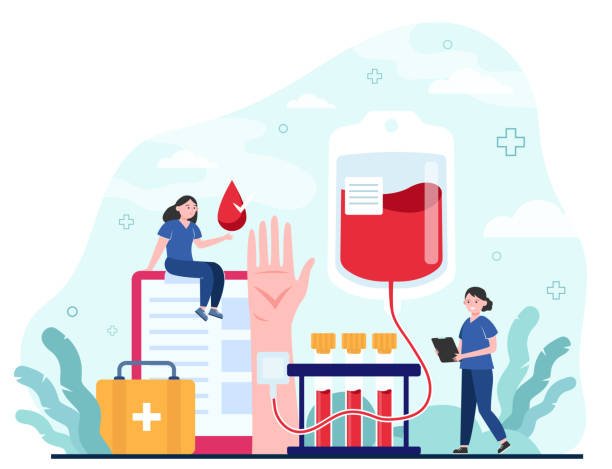Is the Future of Phlebotomy Robotic?
The first use of robots in surgery took place in 1984, when a team at the University of British Columbia Hospital in Vancouver used the voice-operated “Arthrobot” to assist with positioning a patient’s leg for orthopedic surgery. Over the next year, robots assisted with 60 more surgeries at that hospital. Since then, the use of surgical robots, and the diversity of their tasks, have grown exponentially and with great success.
The development of robots for more routine functions, like blood draws, is more recent, however. Though Martin Yarmush of Rutgers University has been thinking about robotic phlebotomy since the 1980s, the first human clinical trial for a robot phlebotomist took place in 2020 at Yarmush’s laboratory at Rutgers University.
According to Yarmush, venipuncture is not only one of the most common medical procedures, but it’s also one of the leading causes of injury to both patients and professionals. The average phlebotomist performs 10,000 venipunctures every year, and the median rate of needlestick injury–and subsequent blood exposure–is one in 10,000. That’s one per year per practitioner.
As for patients, the failure rate for blood draws by human clinicians for patients without visible veins is 27 percent. This rises to 47 percent when the clinician cannot feel the veins, and 60 percent in emaciated patients. Bruising and other injuries are common, not to mention the stress of repeated unsuccessful draws, and the potential for subsequent phlebitis, infections, and thrombosis.
Yarmush’s aim was to decrease the rate of negative outcomes for both patients and practitioners.
In the Rutgers trial, two venipuncture robots were trialled: a full-size version, and another, smaller version, which researchers envisioned for mobile, field, or home use. The robots also included a module that could analyze the sample using lab-on-a-chip microfluidics–with the hope of reducing patient wait times for diagnostic results. The devices used near-infrared light as well as ultrasound to accurately find the location of veins.
The results of the trial were impressive: a success rate of 87 percent overall, going up to 97 percent for patients whose veins were easy to access. This is comparable to or exceeding clinical standards.
In 2022, Dutch medical robotics company Vitestro unveiled the first autonomous blood-sampling robot. Vitestro’s robot uses artificial intelligence, combined with ultrasound-guided 3D reconstruction and robotic needle insertion to draw blood. Clinical trials began in September of 2023, and will include 10,000 human patients. If successful, Vitestro hopes to put its autonomous phlebotomist robot on the market toward the end of 2024.
Vitestro envisions a phlebotomy clinic in which their autonomous robot phlebotomist works together with supervising human phlebotomists. When patients arrive at the clinic, they will be issued a cartridge containing blood tubes, which will be inserted into the device. The patient will then place their forearm into the machine and press the start button. The device will then apply a tourniquet and subsequently take the sample.
Future Potential for Phlebotomist Robots
Clinical trials are showing incredible potential for robot phlebotomists in everything from drawing blood to secure handling of specimens to rapid turnaround for results. In addition, this technology has the potential to ease labor shortages and improve services for people in resource-limited areas.
Fewer Injuries to Patients and Staff
In terms of blood draws, the robot phlebotomist in the Rutgers trial had a success rate equal to or greater than the current clinical standard. When it came to patients with difficult-to-find veins, the robot’s enhanced tools–ultrasound and near-infrared light, for example–increased accuracy and the ability to make a successful draw. This has the potential to translate to fewer injuries of various types to both patients and clinicians.
Greater Agility in the Field
In resource-poor areas such as rural and field settings, a mobile robot phlebotomist with specimen handling and analysis capabilities has the potential to provide fast, accurate information using limited resources. Smaller, portable models could assist users at home or in the field.
Freeing Practitioners
By performing routine tasks such as blood draws, sample handling, and analysis, robot-guided phlebotomy has the potential to free physicians to spend more time healing patients in hospitals and other settings.
Faster Turnaround for Diagnostic Results
Rather than waiting for results to be processed through a laboratory, phlebotomist robots equipped with analysis functions could eventually provide necessary information on the spot.
Reduced Error Rates
Automation of blood drawing, sample handling, and analysis can help to increase consistency and reduce error rates, resulting in better treatment for patients.
Easing Staff Shortages
While the replacement of medical staff by robotic medical assistants is a real concern, fully robotized blood draw clinics could provide services in areas where there are personnel shortages. In a laboratory with both human and robotic practitioners, a human phlebotomist could assist three to four patients to complete their robotic blood draws simultaneously, increasing both speed and efficiency.
Challenges to Implementation
As great as the potential is for robot phlebotomy, challenges still remain.
Perfecting the Procedure
The robotic blood draw procedure is straightforward in theory: find the vein, perform the venipuncture, then draw the sample. However, real-world constraints such as variations in patient anatomy and subtle tissue movements during the procedure still present challenges.
Vitestro’s Chief Medical Officer, Luuk Giessen, MD, says, “A device needs to be able to draw blood from the majority of the population for it to be beneficial for clinical practice. There is so much variation in arms, veins, patient behavior, etcetera, that this is not trivial.”
Patient Trust
Another possible sticking point for implementation is the issue of patient trust. Plenty of patients are fearful of needles and blood draws. Will automating the procedure make it easier for them? Would patients trust a robot with such an invasive task?
A 2021 study of 27,901 people in 28 European countries found that the issue of patient trust in medical robots is quite complicated. In general, the more experience patients had with medical robots, the greater their trust. However, gender, age, educational level, and other social factors had significant influence over the amount of trust patients placed in robotic medical procedures.
Practitioner Resistance
As for practitioners, another study in 2021 found that although many healthcare practitioners welcomed the idea of robots as tools, many also feared replacement by robots. It’s not an unreasonable concern, considering that, according to a 2020 study by MIT, in the field of manufacturing, each new robot replaces 3.3 human workers and lowers wages by 0.4 percent.

